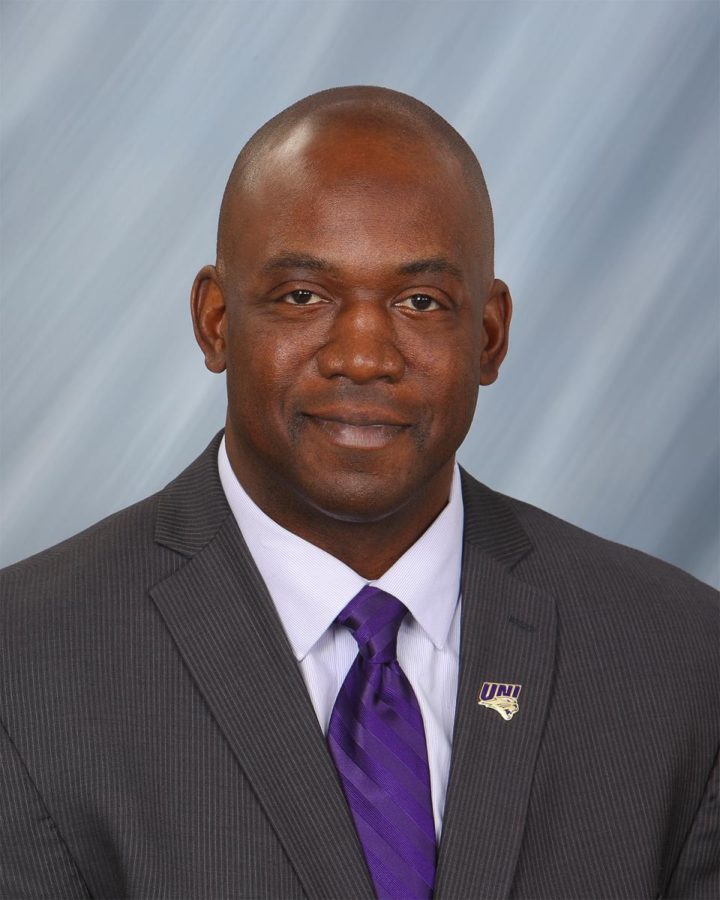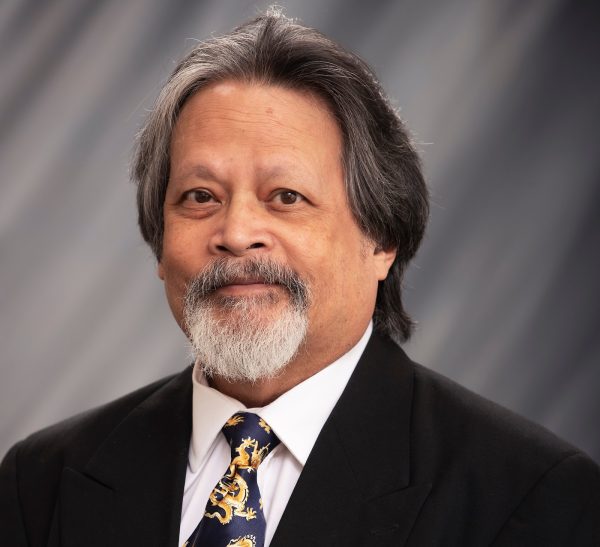AD talks student fees with NISG
UNI Athletic Director David Harris gave a presentation to NISG about the allocation of student fees to the athletic department.
Oct 31, 2016
UNI Athletic Director David Harris and Associate Athletic Director of Business Bethany West presented information to the Northern Iowa Student Government (NISG) on Wednesday regarding the amount of money the athletic department receives from student fees.
“There aren’t any current plans to increase student fees,” Harris said during the presentation.
The presentation primarily focused on detailing the expenses and revenues of the athletic department. Harris and West also explained the aid provided to student athletes, giving a peer comparison within the Missouri Valley Conference.
West began the presentation by explaining athletic department expenses, which are dominated by personnel pay, fringe benefits, student aid and travel expenses. Student aid and travel expenses comprise 40 percent of total athletic department expenses this year, while personnel expenditures comprise 44 percent of total athletic department expenses this year, according to the information provided to NISG by the athletic department. West continued by detailing the revenues of the athletic department.
West compared this year’s budget to the athletic budget from fiscal year 2006 (FY2006) to demonstrate the shift of funding over time at UNI. This year’s athletics-generated revenue comprised 54.4 percent of the total athletic budget, while in FY2006 athletics-generated revenue comprised only 34.3 percent of the budget.
In FY2006, the budget was predominantly subsidized by support from the General Education Fund (GEF), with GEF support at 53.8 percent of the budget, a number that has decreased to 31 percent this year. Student fees, however, have risen slowly from 11.9 percent of the budget in FY2006 to 14.6 percent this year, according to the information provided by the athletic department.
This shift away from GEF support was, in part, due to a Board of Regents decision about athletics funding in 2010, which “gradually reduced GEF support through [fiscal year 2015] to a level of no more than 2.4 percent of the Institutional General Fund budget,” according to West.
West explained that while the GEF contributes $4,350,481 to the athletics department, athletics contributed $4,065,441 to the GEF in student aid and overhead allocations, not including tuition paid by student athletes after athletic aid had been administered.
According to West, 83 student athletes received full scholarships this year – 34 women and 49 men. Two-hundred and eight students received partial aid, which, according to Harris, “could be as little as 10 percent or as much as 90 percent,” while 109 student-athletes received no aid this year. Based on the numbers provided, 73 percent of student athletes receive some sort of aid.
UNI students paid nearly $2 million to the athletics department this year, a number that West compared to other universities in UNI’s conference like Illinois State University, whose athletic department received more than $9.8 million in student fee support. NISG senator and sophomore social science education major Tristan Bernhard questioned this statement.
“The athletics department often uses other Missouri Valley Conference schools as a comparison,” Bernhard said. “But I look at those numbers with some hesitancy because the number of students at schools in the Missouri Valley varies greatly.”
According to Bernhard, the per student number is far more important than the total dollar amount.
“For example, Missouri State, whose athletic figures were used for comparison, has nearly 25,000 students – nearly double that of UNI,” Bernhard said. “If students subsidize 8 million dollars to athletics at Missouri State, for example, and only 4 million here, [hypothetically] students are paying roughly the same on a per student basis.”
In regards to a student fees increase, NISG Director of Administration and Finance Danielle Massey questioned Harris about a previously proposed plan to increase student fees, a plan which was brought to the student fees committee before Harris entered his position as Athletic Director.
Massey said she did not want to see the plan continued under Harris.
“I have never been in support of it, and the Student Fees Committee has been very wary of it as well,” Massey said.
Harris and West first gave the same presentation to the faculty senate in order to proactively inform the faculty about the academic performance of student athletes and the aid they receive.















